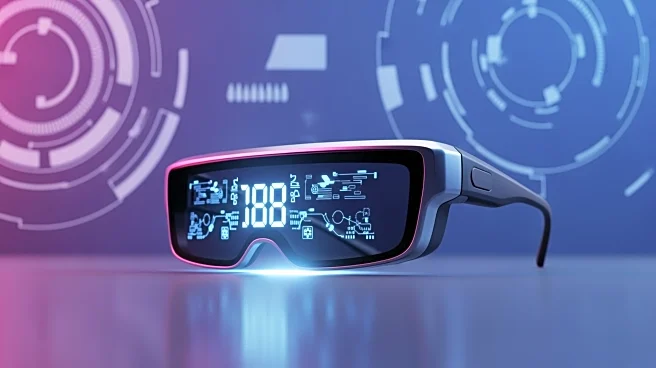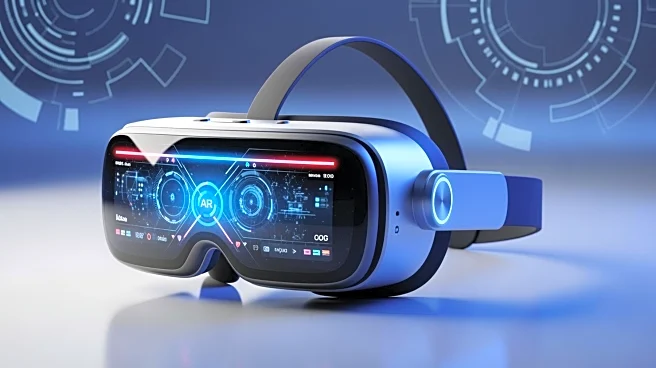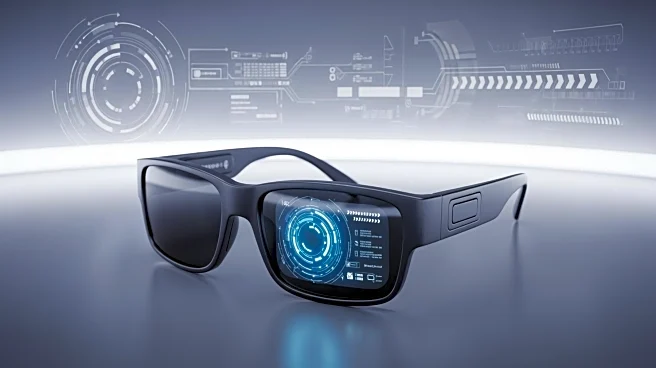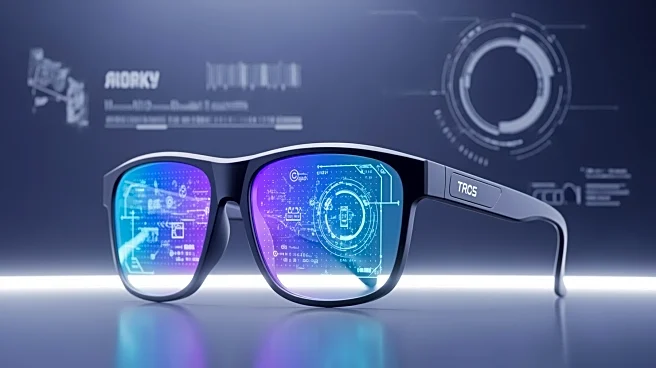What's Happening?
Meta has launched the Meta Ray-Ban Display glasses, priced at $799, which are designed to integrate simple augmented reality features into everyday eyewear. The glasses come with a Meta Neural Band wristband
that uses electromyography (EMG) to read subtle hand gestures, offering up to 18 hours of battery life per charge. This product represents a shift from Meta's previous focus on virtual reality and high-end augmented reality prototypes, marking its first mass-market wearable that displays apps directly in the lens. The launch is seen as a strategic move to test consumer acceptance of partial augmented reality features, such as notifications, maps, and translations, before more advanced passthrough optics become available.
Why It's Important?
The introduction of the Meta Ray-Ban Display glasses is significant as it could influence the direction of the augmented reality market. By prioritizing battery life, gesture controls, and affordability, Meta aims to lower the barrier for casual buyers, potentially accelerating the adoption of augmented reality technology. This move could also prompt competitors like Apple and Google to expedite their own AR product launches, intensifying market competition. The $799 price point suggests Meta is targeting early consumers rather than enterprise users, which could lead to widespread consumer testing and feedback that shapes future AR developments.
What's Next?
As Meta's Ray-Ban Display glasses enter the market, industry analysts expect adoption data to reveal initial consumer curiosity, with sustained demand likely tied to the integration of useful applications such as maps, messaging, and translations. The success of this product will depend on real-world use, battery performance, and the depth of app integrations. If Meta can quickly establish partnerships with app developers and deliver daily utilities, it may normalize smart eyewear as a complement to smartphones. However, if competitors offer richer AR experiences in the coming years, early adopters might find themselves with a limited first-generation product.
Beyond the Headlines
The launch of Meta's Ray-Ban Display glasses raises questions about the future of augmented reality and its role in everyday life. The product's focus on practical applications rather than immersive experiences suggests a shift towards utility over novelty in AR technology. This could lead to broader acceptance and integration of AR in daily activities, potentially transforming how consumers interact with digital information. Additionally, the emphasis on battery life and gesture controls highlights the ongoing trade-offs in AR product design, balancing functionality with user convenience.











